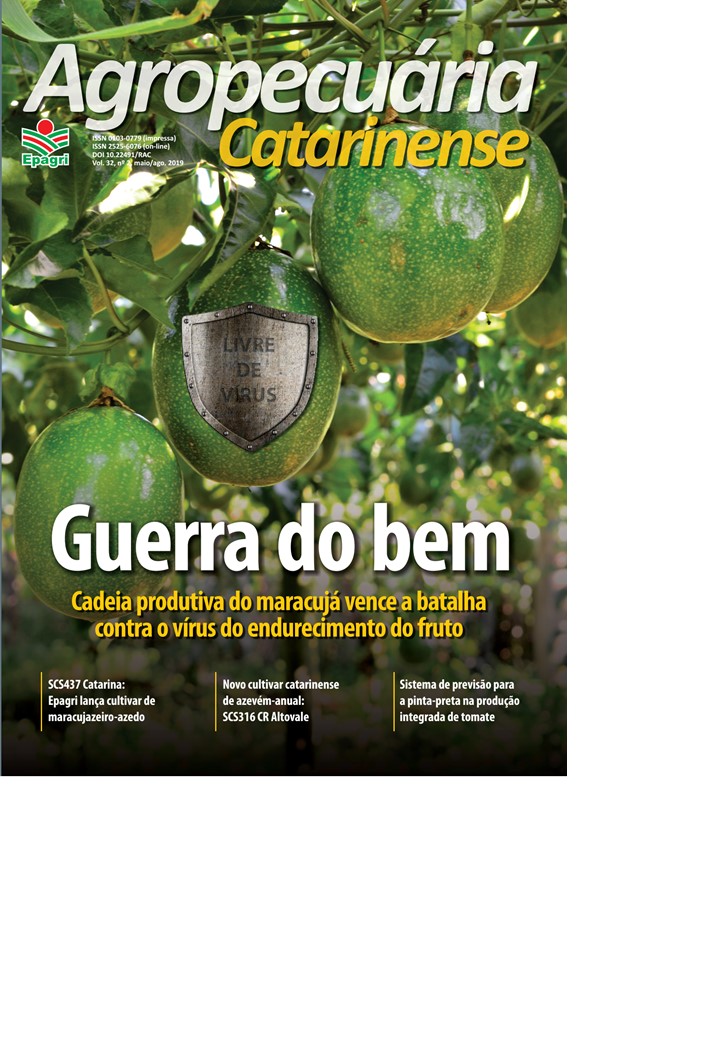Validation of a predictive system for the early blight in the integrated production of tomato
DOI:
https://doi.org/10.22491/RAC.2019.v32n2.9Keywords:
Solanum lycopersicum, forecast system, Alternaria solaniAbstract
Abstract – Tomato early blight, caused by Alternaria spp., is one of the main diseases occurring on tomato crops in the Joaçaba microregion, which is accountable for more than 57% of the tomato production in the State of Santa Catarina. Fungicides are commonly used on a weekly schedule to control early blight, increasing production costs. This study aimed to compare the preventive calendar-based application schedules with the TomCast forecast system. This system uses the duration of leaf wetness and average temperature during the wetness period to calculate a daily severity value (DSV). The calendar-based fungicide application started in the week of transplanting, whereas the TomCast predictor fungicide spray begun when the cumulative DSV reaches a predetermined threshold (10, 15, 20, 25, and 30 DSV). In each of the years studied, timing sprays according to the TomCast predictor resulted in disease control and yield comparable with the weekly schedule, but delayed the initial fungicide spray for as much as 26 to 41 days. Additionally, the TomCast predictor system allowed reducing the number of sprays by up to 84%.



